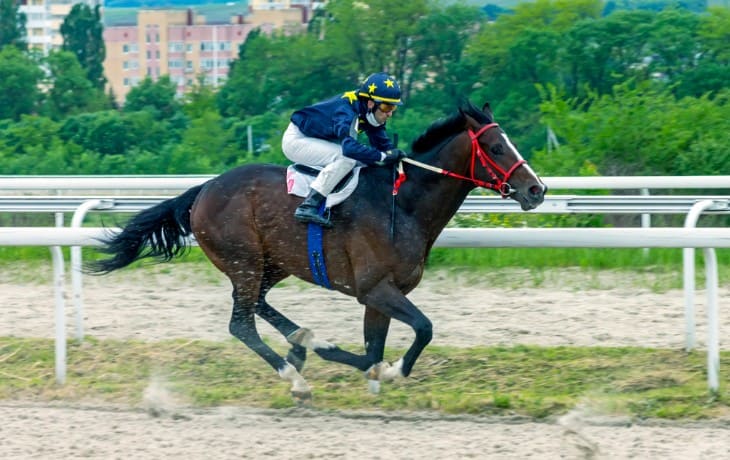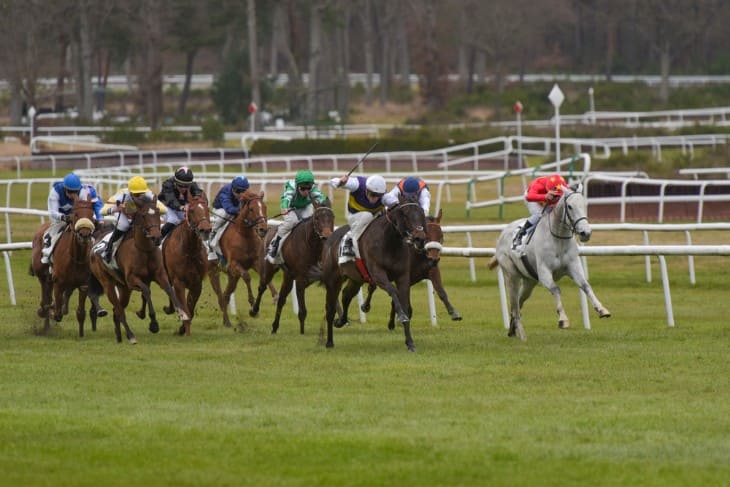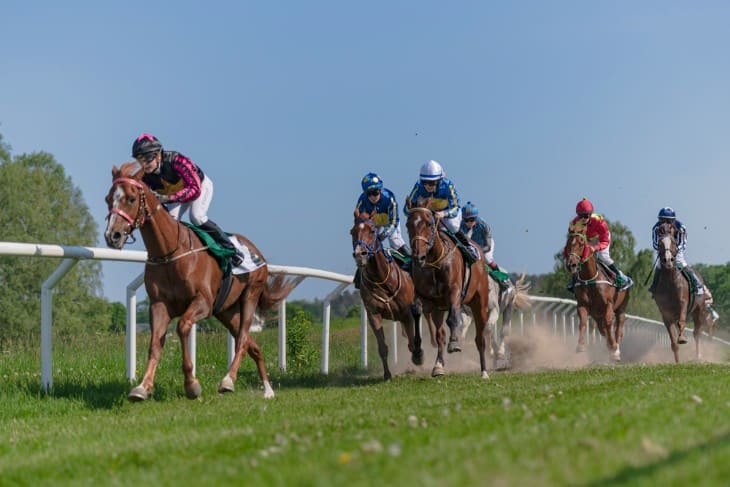- Understanding Track Bias: Key Concepts and Definitions
- Analysing Weather and Ground Conditions
- The Role of Track Geometry in Race Outcomes
- Practical Tips for Bettors
- Statistical Approaches to Evaluating Track Bias
- The Impact of Track Bias on In-Play Betting Strategies
- Integrating Track Bias Analysis with Other Betting Factors
- Fair Play in Betting
- Advanced Techniques in Track Bias Prediction
- Conclusion
Understanding Track Bias: Key Concepts and Definitions
Track bias in horse racing refers to a situation where certain paths on the race track play favourably or unfavourably, affecting the outcome of the race. This phenomenon can be caused by various factors, including weather conditions, track maintenance, and the inherent design of the track itself. The concept of track bias is crucial for bettors and enthusiasts as it can significantly influence betting decisions and race strategies.
To comprehend track bias, one must first understand the layout of a horse racing track. Tracks can vary in length, width, and surface type (such as turf, dirt, or synthetic). The bias may manifest in different forms – for instance, a particular lane might be faster, or certain positions might be advantageous due to the track's turns and straights. Recognising these biases requires keen observation and analysis of past races held under similar conditions.
In the early days, track bias was often a result of natural factors like weather or uneven wear and tear of the track. With advancements in technology and track maintenance, modern racing venues have more control over track conditions. However, despite these improvements, track bias still exists and continues to play a significant role in horse racing. Historical analysis of races provides valuable insights into how track conditions have influenced race outcomes over time, allowing bettors and participants to make more informed decisions.
Analysing Weather and Ground Conditions
The impact of weather and ground conditions on track bias cannot be overstated. Adapting to Track Bias is essential for bettors and racing teams alike, and this begins with a thorough understanding of how weather affects the track. For example, heavy rainfall can lead to a softer, more yielding ground, which might favour horses accustomed to such conditions. Conversely, dry weather can harden the track, benefiting horses that perform well on firmer surfaces.
Key factors to consider include:
- Rainfall: The amount and recency of rain can drastically change the track's texture.
- Temperature: Temperature fluctuations can affect the moisture level and firmness of the track.
- Wind: Strong winds can influence race dynamics and speed, especially in open track areas.

The Role of Track Geometry in Race Outcomes
Track geometry plays a pivotal role in influencing race outcomes. The design of a track, including its turns, straights, and gradients, can create biases towards certain running styles or positions. For instance, tracks with sharp turns might favour horses that can maintain speed while cornering, while longer straights could benefit horses with good stamina and speed.
Understanding a track's geometry involves analysing:
- Track Layout: The shape and length of the track and its influence on race dynamics.
- Turns and Straights: The number and sharpness of turns, and the length of straights, can impact different racing styles.
- Gradient: The presence of uphill or downhill sections, which can affect a horse's performance, especially in the final stages of a race.
Practical Tips for Bettors
Identifying track bias is a skill that can significantly enhance a bettor's chance of success. The first step in this process is gathering data. Bettors should analyse past race results under varying conditions to identify any patterns or trends. This analysis can reveal whether certain lanes are consistently outperforming others or if specific track conditions are influencing the outcomes. For instance, a track might consistently favour horses starting from the inside lanes under wet conditions.
Another key strategy is observing the behaviour and performance of horses in earlier races of the day. This can provide valuable insights into the current state of the track. Additionally, paying attention to the comments and strategies of experienced jockeys and trainers can offer clues about the day's track conditions. These professionals have a deep understanding of how different tracks play and are often the first to notice and start Adapting to Track Bias.
Statistical Approaches to Evaluating Track Bias
In the modern era of horse racing, statistical analysis has become an indispensable tool for evaluating track bias. This approach involves the collection and examination of extensive data from past races to identify patterns that might not be immediately apparent. Bettors and racing analysts use various statistical methods to assess how different factors, such as lane, weather, and ground conditions, affect race outcomes.
Key aspects to consider in statistical analysis include:
- Race Times and Splits: Comparing race times and sectional splits across different conditions to identify faster or slower sections of the track.
- Lane Performance: Analysing the success rate of horses running in different lanes or positions.
- Horse and Jockey Performance: Assessing how individual horses and jockeys perform under varying track conditions, which can indicate preferences or adaptability to certain biases.
By employing these statistical methods, bettors can gain a more nuanced and objective understanding of track bias, enhancing their betting strategies.
The Impact of Track Bias on In-Play Betting Strategies
The concept of track bias significantly influences in-play betting strategies. In-play, or live betting, involves placing bets on races as they are happening, which requires quick adaptation to unfolding events and conditions. Understanding and Adapting to Track Bias becomes crucial in this fast-paced betting format. Bettors must not only consider the pre-race analysis of track conditions but also be adept at interpreting how these conditions are affecting the race in real-time.
For instance, if early races indicate a strong bias towards the inside lanes, in-play bettors can adjust their bets accordingly for subsequent races. Additionally, watching how horses and jockeys are handling the track during the race provides valuable insights. A horse that's performing well in spite of a bias against its position may indicate a strong contender, while a favourite struggling with the bias might be a risky bet.
Integrating Track Bias Analysis with Other Betting Factors
Integrating track bias analysis with other betting factors is crucial for a comprehensive betting strategy. While track bias provides valuable insight, it is just one aspect of a multifaceted betting approach. Bettors must also consider factors like horse form, jockey experience, and trainer history. Adapting to Track Bias effectively means understanding how it interacts with these other elements to influence a race's outcome.
For example, a horse with excellent form might not perform as expected if the track conditions are against it. Similarly, a jockey's experience on a particular track can be a significant advantage in navigating track biases. Integrating these factors involves a balanced analysis, weighing the impact of track bias against the strengths and weaknesses of each horse and jockey combination in the context of the specific race.

Fair Play in Betting
Ethical considerations and fair play are vital in the context of betting, especially when considering the impact of track bias. The integrity of horse racing and betting relies on a level playing field where no unfair advantage is given to any particular entrant. This is where the concept of Adapting to Track Bias intersects with ethical considerations. While it's important for bettors and participants to adapt to track bias, it's equally crucial for race organisers and track managers to ensure that the bias does not confer an unfair advantage.
Advanced Techniques in Track Bias Prediction
For those seeking to dive deeper into track bias analysis, advanced techniques offer a more precise understanding of how it can affect race outcomes. These techniques are particularly valuable for bettors looking to gain a competitive edge. Adapting to Track Bias at an advanced level involves a combination of data analysis, predictive modelling, and real-time observation. Here are some advanced techniques:
- Machine Learning Algorithms: Using machine learning models to analyse historical race data and identify subtle patterns related to track bias. These algorithms can consider numerous variables simultaneously, providing more accurate predictions.
- Data Integration: Combining various data sources, including weather reports, track maintenance records, and jockey performance data, to create a comprehensive analysis that considers multiple factors influencing track bias.
- Real-time Monitoring: Employing sophisticated software and technology to monitor live races and provide instantaneous feedback on how track bias is evolving during a race day. This allows for quick adjustments in betting strategies.
Conclusion
In conclusion, understanding and Adapting to Track Bias is an essential skill for both novice and experienced bettors in the world of horse racing. It involves recognising how various factors such as weather, track geometry, and ground conditions can influence the outcome of races. Bettors should gather data, employ statistical analysis, and integrate track bias insights with other betting factors to make informed decisions.
Moreover, the impact of track bias extends to in-play betting, where quick adjustments to evolving conditions are crucial. Case studies of notable instances of track bias altering race outcomes provide valuable lessons, and ethical considerations must always be at the forefront of betting practices to maintain the integrity of the sport.
For those seeking a deeper understanding, advanced techniques in track bias prediction offer a competitive edge. By combining data analysis, predictive modelling, and real-time monitoring, bettors can gain a more precise understanding of how track bias affects races. In the dynamic world of horse racing, the ability to adapt to track bias can make all the difference in making successful betting decisions.
For more information:







